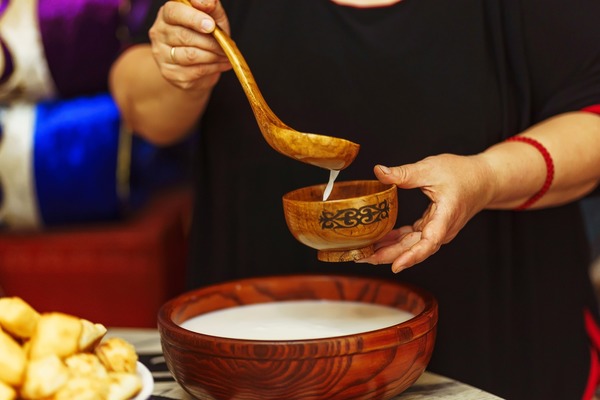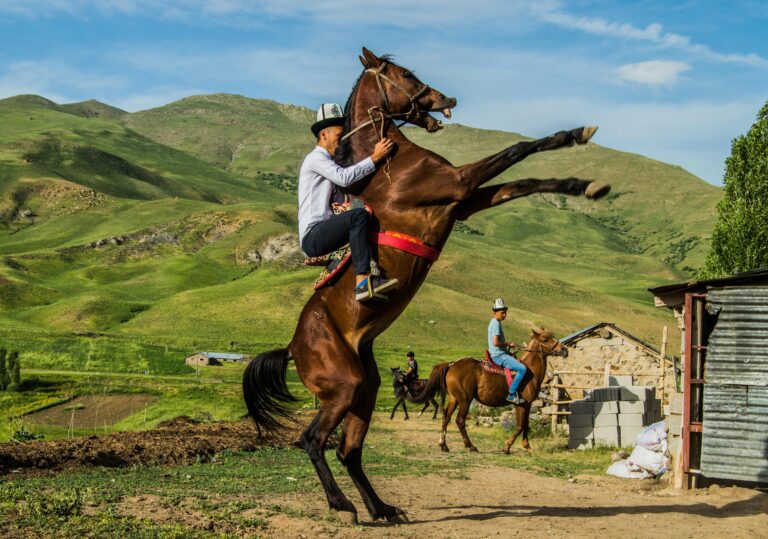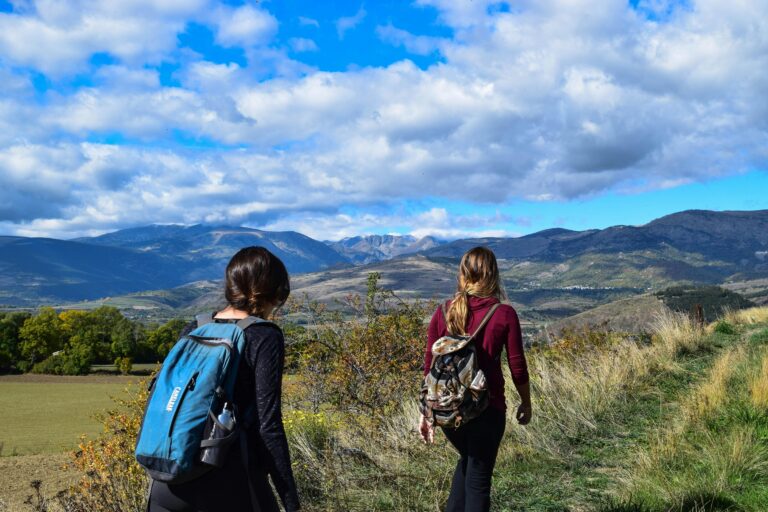In the heart of Central Asia, where nomads have thrived for centuries in harsh mountain climates, kumis (also spelled kymys or kymus) has been more than just a beverage – it’s been a medicine, a tradition, and a way of life.
In this post, we explore what is kumis drink, its unique fermentation process, kumis benefits for your health, and why kumis therapy is becoming a sought-after natural treatment for gut health, immunity, and more.
Looking for private tour to Kyrgyzstan? Póngase en contacto con nosotros and we will arrange your dream journey.
Índice
ToggleWhat Is Kimiz Drink?
Kumis is a fermented dairy drink made from mare’s milk (female horse), which undergoes a natural lactic acid and alcoholic fermentation. Known by different names, kumis in English, kymys/kymus in Kyrgyz, кумыс in Russian, this drink has been a staple of nomadic diets in Kyrgyzstan, Kazakhstan, and Mongolia for over a thousand years.
Unlike cow milk, mare’s milk is naturally low in fat and high in lactose, which makes it suitable for fermentation into a slightly fizzy, sour, and mildly alcoholic beverage (usually around 1–2.5% ABV).
Kumis Benefits: Why People Drink It
Kumis is not just a cultural icon – it’s a functional food with real health benefits. Traditionally used to boost the immune system, aid digestion, and treat respiratory conditions, kumis therapy is now getting international attention as a form of natural probiotic treatment.
1. Rich in Probiotics
The fermentation process produces beneficial bacteria like Lactobacillus, which help:
- Improve gut microbiome
- Enhance nutrient absorption
- Fight harmful pathogens
2. Supports Immunity
Kumis is often used to recover from respiratory illnesses and general fatigue, especially in spring and early summer.
3. Aids Digestion & Detoxification
Helps cleanse the liver and intestines and is even used for post-antibiotic recovery.
4. High in Nutrients
Contains vitamins A, D, E, B1, B2, B12, essential fatty acids, calcium, and natural enzymes.
5. Menebalkan Kumis (Strengthening the Body)
In traditional medicine, menebalkan kumis refers to using kumis to restore energy, increase muscle tone, and improve overall vitality after illness, childbirth, or seasonal fatigue.
Kumis vs. Kumis Yogurt: What’s the Difference?
Many confuse kumis with kumis yogurt or kefir, but they are quite different:
| Feature | Kumis | Yogurt | Kefir |
|---|---|---|---|
| Made from | Mare’s milk | Cow/sheep milk | Cow/goat milk |
| Texture | Thin, liquid | Thick, creamy | Slightly fizzy |
| Alcohol | ~1–2.5% | None | Trace amounts |
| Probiotics | High | Moderate | High |
| Lactose content | Lower after fermentation | Medium | Low |
Kumis yogurt is not a traditional term some commercial producers use cow milk to imitate kumis texture, but it lacks the authentic microbial profile of real fermented mare’s milk.
Kumis Therapy: The Treatment Approach
In Kyrgyzstan and Kazakhstan, kumis therapy (or kymys emdeesi in Kyrgyz) is used in specialized health retreats located in mountain pastures called “jailoo.” Patients stay in yurts, breathe clean alpine air, and drink kumis several times a day in small, prescribed doses.
Typical Kumis Therapy Program:
- Location: High-altitude pasture (above 2000m)
- Duration: 7 to 21 days
- Kumis Intake: 200–600 ml per day in multiple doses
- Activities: Rest, hiking, horse riding, herbal treatments
- Diet: Clean, simple food with no alcohol or processed sugar
Kumis therapy is believed to help treat:
- Chronic bronchitis
- Tuberculosis (supportive only)
- Fatigue, insomnia
- Digestive disorders
- Anemia and vitamin deficiencies
Where to Try Kumis Therapy
Best regions in Kyrgyzstan:
- Kochkor Jailoo – Popular among domestic travelers
- Kilemche & Son-Kul – Beautiful pastures with yurt stays
- Naryn Region – Traditional treatment in pristine mountain air
Many travel agencies offer yurt-based kumis therapy experiences from May to September, often combined with horseback riding and hiking.
How to Drink Kumis the Right Way
Kumis is best consumed:
- Chilled, in small sips
- Early morning or midday, never late at night
- On an empty stomach, followed by rest
- Avoid mixing with spicy or greasy foods
For first-timers, the taste might be unusual – sour, fizzy, slightly bitter, and alcoholic. But once your body adjusts, many report a light, energized feeling within days.
Who Should Avoid Kumis?
While kumis is generally safe, people with the following conditions should consult a doctor:
- Severe lactose intolerance
- Alcohol sensitivity
- Pregnancy or breastfeeding (moderation advised)
- Autoimmune disorders (individual response may vary)
Final Thoughts
Whether you call it kumis, kymys, or kymus, this ancient drink continues to thrive in the 21st century thanks to its powerful probiotic profile, deep cultural roots, and holistic healing qualities.
Kumis therapy isn’t just a wellness trend – it’s a time-tested method of natural treatment. For those seeking digestive health, energy restoration, or even just cultural immersion, trying kumis in the highlands of Kyrgyzstan could be the health journey you didn’t know you needed.










